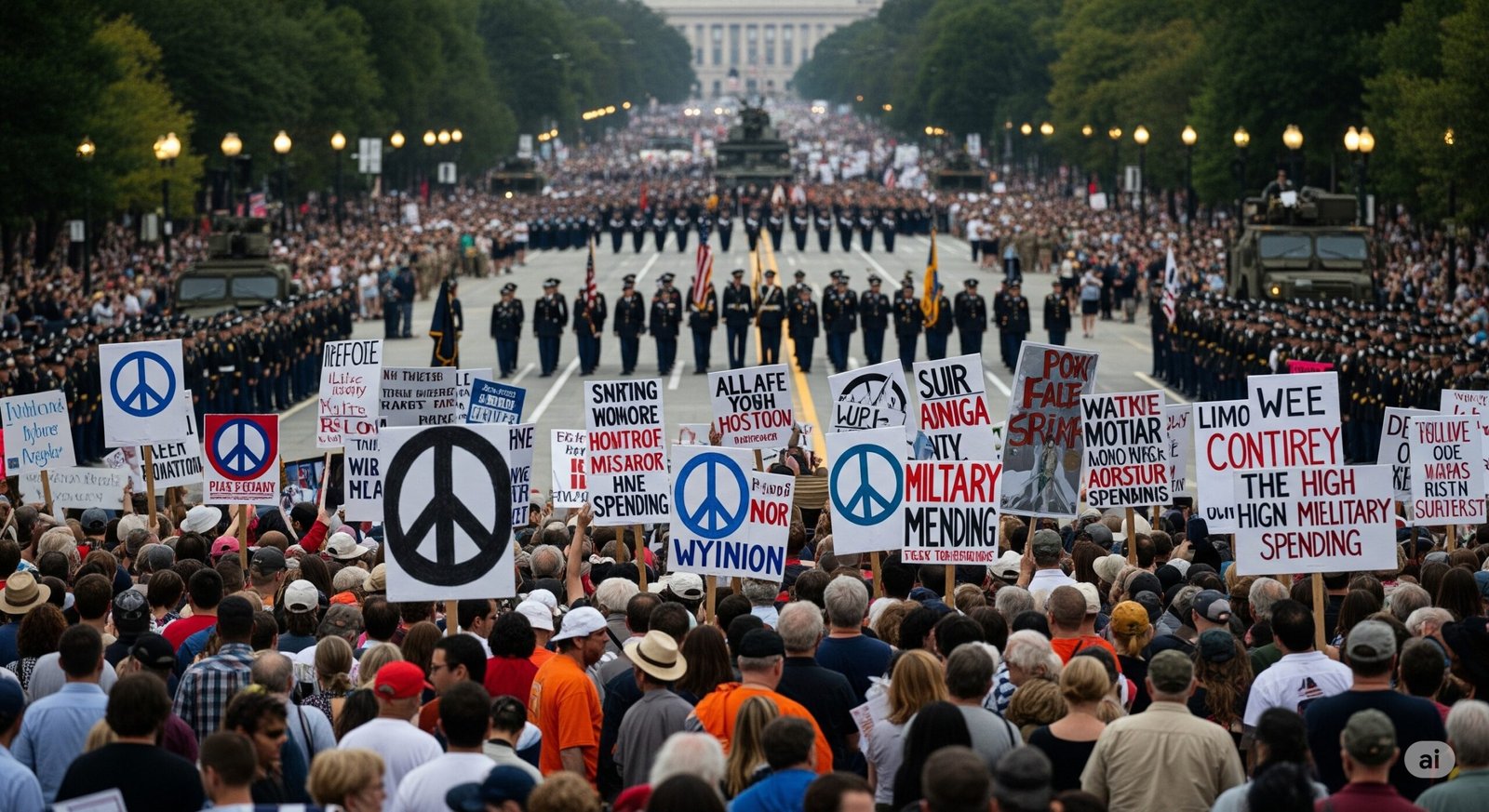Protests Challenge Military Parade in Washington D.C.


Millions across the U.S. unite in “No Kings” protests against a D.C. military parade, opposing authoritarianism and celebrating democracy.
Across the United States, a powerful wave of dissent rose as millions participated in the “No Kings” protests, challenging a large military parade held in Washington D.C. This nationwide movement, encompassing nearly 2,000 locations, stood in stark contrast to the spectacle of military might, reflecting deep-seated concerns over authoritarianism and the direction of the nation.
A Nation Divided: Protests Against Parade
The “No Kings” protests, timed to coincide with the military parade, became a focal point for a nation grappling with its identity. From major cities to small towns, Americans from all walks of life voiced their opposition to what they perceived as an excessive display of presidential power.
- Nationwide Mobilization: Millions took to the streets, marking potentially the largest single-day protest since the current administration assumed office.
- Diverse Voices: The protests drew a wide range of participants, united in their call for a rejection of authoritarianism and a return to democratic values.
- Symbolic Stand: The choice to protest on the same day as the military parade was a deliberate act, highlighting the protesters’ belief in the power of the people over displays of force.
The Parade: A Flashpoint of Controversy
The military parade itself became a symbol of the growing divide in the United States. While some viewed it as a celebration of the armed forces, others saw it as an unnecessary and costly display of power.
- Massive Display: The parade featured thousands of soldiers, military vehicles, and aircraft, showcasing the nation’s military might.
- High Costs: Critics pointed to the significant expense of the parade, questioning its value at a time when many Americans faced economic hardship.
- Symbolism Under Scrutiny: The parade’s timing and nature drew comparisons to displays of power in authoritarian regimes, fueling the protesters’ concerns.
Key Issues Driving the Protests
The “No Kings” protests were fueled by a range of concerns, reflecting a broader unease with the current political climate.
- Immigration Policies: Crackdowns on immigration and the deployment of federal forces sparked outrage and fueled the protests.
- Military Mobilization: The use of the National Guard and Marines to quell protests in Los Angeles raised concerns about the militarization of domestic law enforcement.
- Economic Inequality: Protesters criticized what they saw as “billionaire-first politics,” arguing that the parade’s cost was a misallocation of resources.
Recent Posts
Apple’s Big Plans for Early 2026: What to Expect
Get ready, tech enthusiasts! Apple is reportedly gearing up for a significant wave of product… Read More
Understanding Trump’s Latest Move Against Canada and Beyond
A Bold Stance on Trade Relations The global trade landscape is once again shifting as… Read More
Stop Believing These Common Weight Loss Myths
Tired of weight loss advice that just doesn't work? Debunking the most common myths about… Read More
Sweat Smarter, Not Harder: Your Beginner’s Guide to Home Workouts
Ready to get fit without leaving your house? This beginner-friendly guide covers everything you need… Read More
Did False Data Cost Columbia $9 Million? What the Lawsuit Means for Students
Columbia University settles a $9 million lawsuit over alleged false data in college rankings. Discover… Read More
US Stock Market Why Futures Dipped After Record Highs
US stock futures dip after record highs. Explore what's driving this pullback, from federal policy… Read More